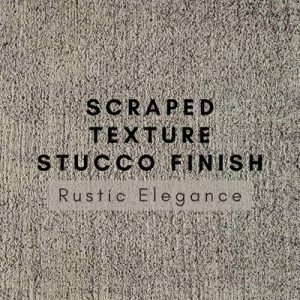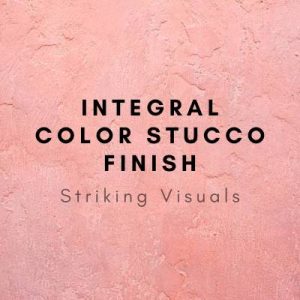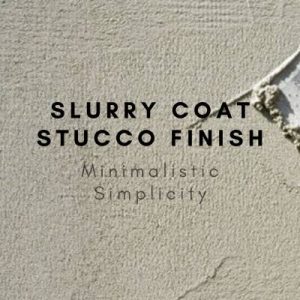Artistry on Grass – Unique Lawn Striping Patterns for a Stunning Yard
In home landscaping, creating unique lawn striping patterns has gained traction. Beyond mere mowing routines, these patterns transform ordinary lawns into canvases of geometric beauty. Lawn striping, an ingenious method of bending grass blades to reflect sunlight differently, produces visually striking patterns. These patterns enhance the overall appeal of a garden or outdoor space. This practice goes beyond the fundamental act of lawn mowing. It’s about curating beautiful lawn mowing patterns that showcase a homeowner’s creativity and attention to detail.
Something else that could make your environment appealing is your lighting and elegant outdoor furniture. Paired with a great lawn, your home will be the talk of your neighborhood. Now, let’s help you achieve this!
The Basics of Lawn Striping
What is Lawn Striping?
Lawn striping is a technique that involves strategically mowing your lawn to create alternating light and dark stripes. Experts achieve this effect by bending the grass blades in different directions during mowing. When the blades of grass are bent away from you, they reflect more light, resulting in lighter stripes. Conversely, grass blades bent towards you absorb more light, creating darker lawn stripes. This simple yet effective method leverages the natural characteristics of grass to produce a visually stunning pattern.
How Does Lawn Striping Work?
The fundamental principle behind lawn striping is the manipulation of grass blades. The direction and angle at which the blades are bent determine the appearance of the stripe pattern. Typically, a lawn roller or a similar attachment is used with the lawn mower. As you mow, the lawn roller gently bends the grass blades in your mowing direction. When you make a return pass going the opposite direction, the blades bend in the other direction, thus creating the alternating pattern of light and dark stripes.
Creating Lawn Striping Patterns
One can choose from various lawn striping patterns, ranging from simple straight lines to complex designs like checkerboards or spirals. The choice of pattern depends on the level of complexity you’re comfortable with and the size and shape of your lawn. Popular lawn mowing patterns include straight, checkerboard, diagonal, and circular stripes. Each one offers a unique aesthetic to your yard.
Benefits of Lawn Striping
Apart from the obvious aesthetic appeal, lawn striping also contributes to the health of your grass. Alternating the mowing direction prevents the grass from growing in one direction, reducing soil compaction and promoting healthier grass growth. Additionally, well-striped lawns elevate the curb appeal of a property, potentially increasing its value.
Popular Lawn Striping Patterns
Creating lawn striping patterns is both an art and a science. It allows homeowners to add a touch of elegance and uniqueness to their yards. Here are some popular lawn patterns that have captivated many lawn enthusiasts:
Straight Line Patterns
The quintessence of lawn striping, this pattern involves mowing in straight lines back and forth across the lawn. This method is straightforward yet produces an intense stripe pattern. The key is to mow each pass as straight as possible. It ensures that the darker lawn stripes and lighter stripes align precisely for a crisp, clean look.

Diagonal Patterns
Adding a twist to the straight line method, diagonal patterns involve mowing in straight lines at an angle, usually 45 degrees, to the edges of the lawn. This pattern gives a more dynamic appearance and can make the lawn seem larger.
Checkerboard Patterns
One of the most visually striking lawn patterns, the checkerboard combines straight and diagonal lines. After completing straight line stripes, the lawn is mowed again in a diagonal or checkerboard pattern, crossing the initial stripes. This method creates a distinctive and intense stripe pattern.
Circles and Curves
For lawns with focal points like trees or garden features, circular or curved patterns are an excellent choice. These involve mowing in arcs or circles around the focal point. It creates a pattern that draws the eye toward the center of interest.
Advanced and Creative Lawn Striping Ideas
For those seeking to elevate their lawn mowing to a form of artistic expression, there are several advanced and creative patterns to consider:
Wave Patterns
Instead of mowing in straight lines, this pattern creates wavy lines across the lawn. This can be achieved by gently turning the mower wave-like, creating a flowing, naturalistic pattern.
Diamond Pattern
Like the checkerboard, the diamond pattern requires mowing in diagonal lines across the lawn. This creates a series of diamonds that appear to shimmer in the light.
Custom Artistic Patterns
For the truly adventurous, the lawn can become a canvas for artistic expression. This could involve creating specific shapes, letters, or even logos in the grass. It requires careful planning and precise mowing to maintain the exact same pattern throughout.
Variable Stripe Widths
Instead of creating stripes of uniform width, varying the width adds a unique visual texture to the lawn. This involves alternating between mowing wider and narrower stripes side by side.
Taller Grass for More Intense Stripes
Letting the grass grow slightly taller before mowing results in a more intense stripe pattern. The taller grass blades bend more easily and maintain their position longer. This enhances the contrast between the dark and light stripes.
Practical Tips for Achieving Perfect Lawn Stripes
Creating the perfect lawn stripes combines technique, equipment, and understanding your lawn’s characteristics. Here are practical tips to help you achieve those enviable stripes:
Select the Right Tools
Invest in a lawn striping kit. These kits usually attach to your mower and include rollers that press the grass down to create the striped pattern. The type of kit varies depending on the mower model and the pattern you wish to create.
Understand Your Grass Type
The grass type in your lawn is crucial in how well the stripes will show. Cool-season grasses, like fescue, ryegrass, and bluegrass, are more conducive to striping than warm-season grasses. Warm-season grasses can still be striped, but the patterns might not be as pronounced.
Keep Grass Taller for More Intense Stripes
Mowing your grass a bit taller may lead to a more intense stripe pattern. Taller grass bends more easily and stays down longer, enhancing the contrast between light and dark stripes.
Mow in the Right Direction
The direction in which you mow affects how the grass appears. The grass bent towards you appears darker, while the grass bent away from you appears lighter. During each mowing session, consistently mowing in the same pattern will reinforce the striped pattern.
Experiment with Patterns
Beyond the classic straight line, try patterns like the checkerboard or diamond pattern. For the checkerboard, mow stripes in one direction, then perpendicular to those lines. For a diamond pattern, do the same but in diagonal directions.
Maintain Your Mower and Blades
A clean cut is essential for a better stripe pattern. Ensure that your mower’s blades are sharp and the mower is well-maintained. Dull blades can fray the grass blade ends, resulting in a less defined stripe.
Use Light and Dark to Your Advantage
Understanding how light interacts with your lawn can enhance the striping effect. Mow patterns that take advantage of the sun’s position can make the light stripe appear more vibrant and the dark stripe more profound.
Alternate Your Stripes
Alternate your mowing stripes to promote healthy grass growth and avoid soil compaction. This practice also helps maintain an even grass length and avoids forming ruts in the lawn.
Incorporate Curves for Visual Interest
For a more dynamic look, try a spiral pattern or gentle curves. This can be especially striking in larger lawns and adds a unique character compared to the traditional straight stripes.
Practice and Patience
Achieving the perfect striped pattern requires practice. Don’t be discouraged if your first few attempts aren’t perfect. With time and experience, your technique and your lawn’s appearance will improve.
Final Words
If you love to create lawn striping patterns, it will elevate the aesthetic appeal of your outdoor space. Through strategically bending grass blades during mowing, you can create an array of patterns where the grass appears darker or lighter based on the direction it is bent. The contrast between these shades forms the basis of the visually striking patterns that characterize a well-striped lawn. Whether you’re a beginner experimenting with simple straight lines or a seasoned gardener crafting intricate designs, lawn striping offers a unique blend of artistry and lawn care. With the right tools, techniques, and creativity, you can transform your lawn into a stunning landscape feature that showcases your style and enhances the overall beauty of your home.





















